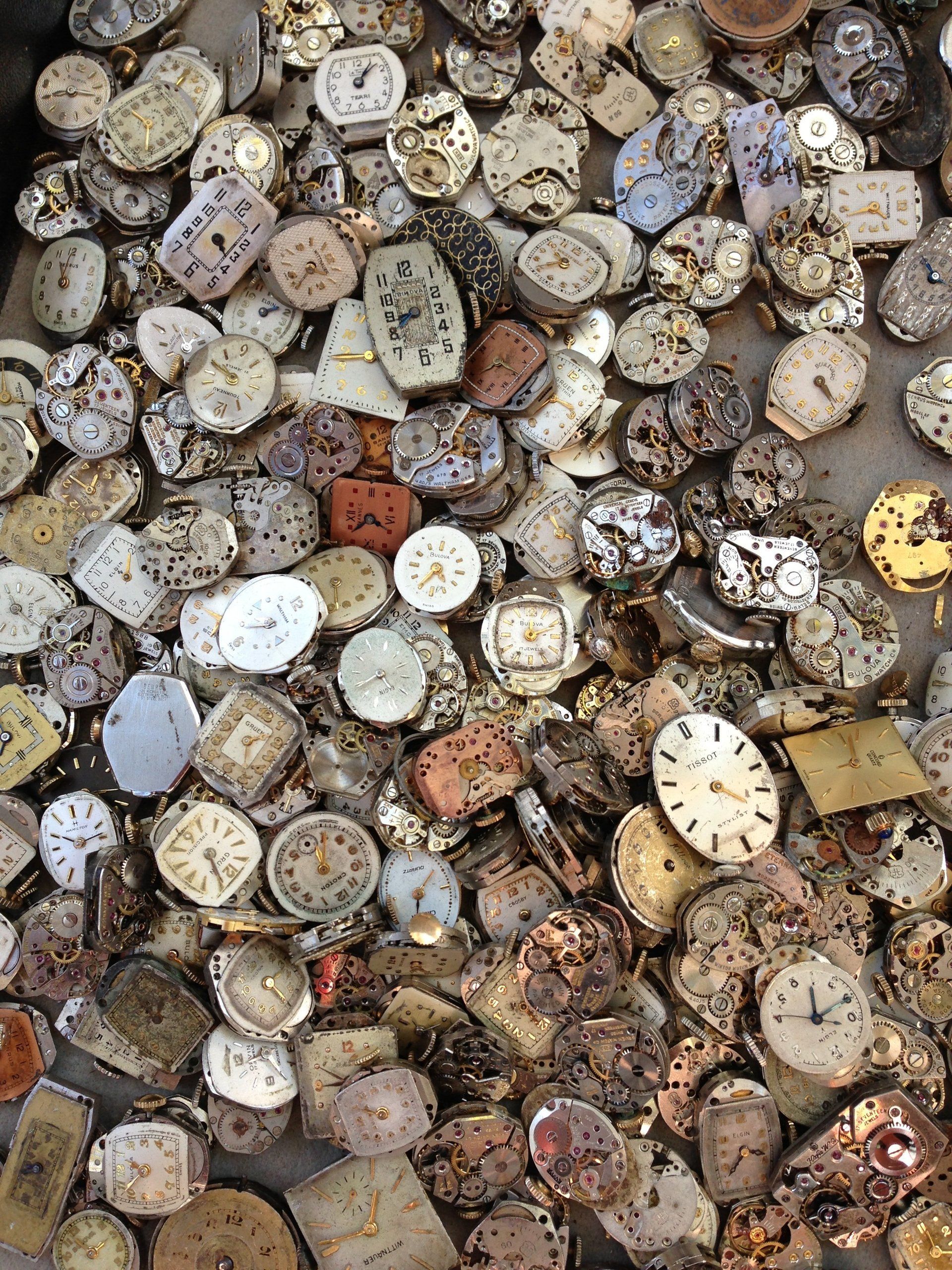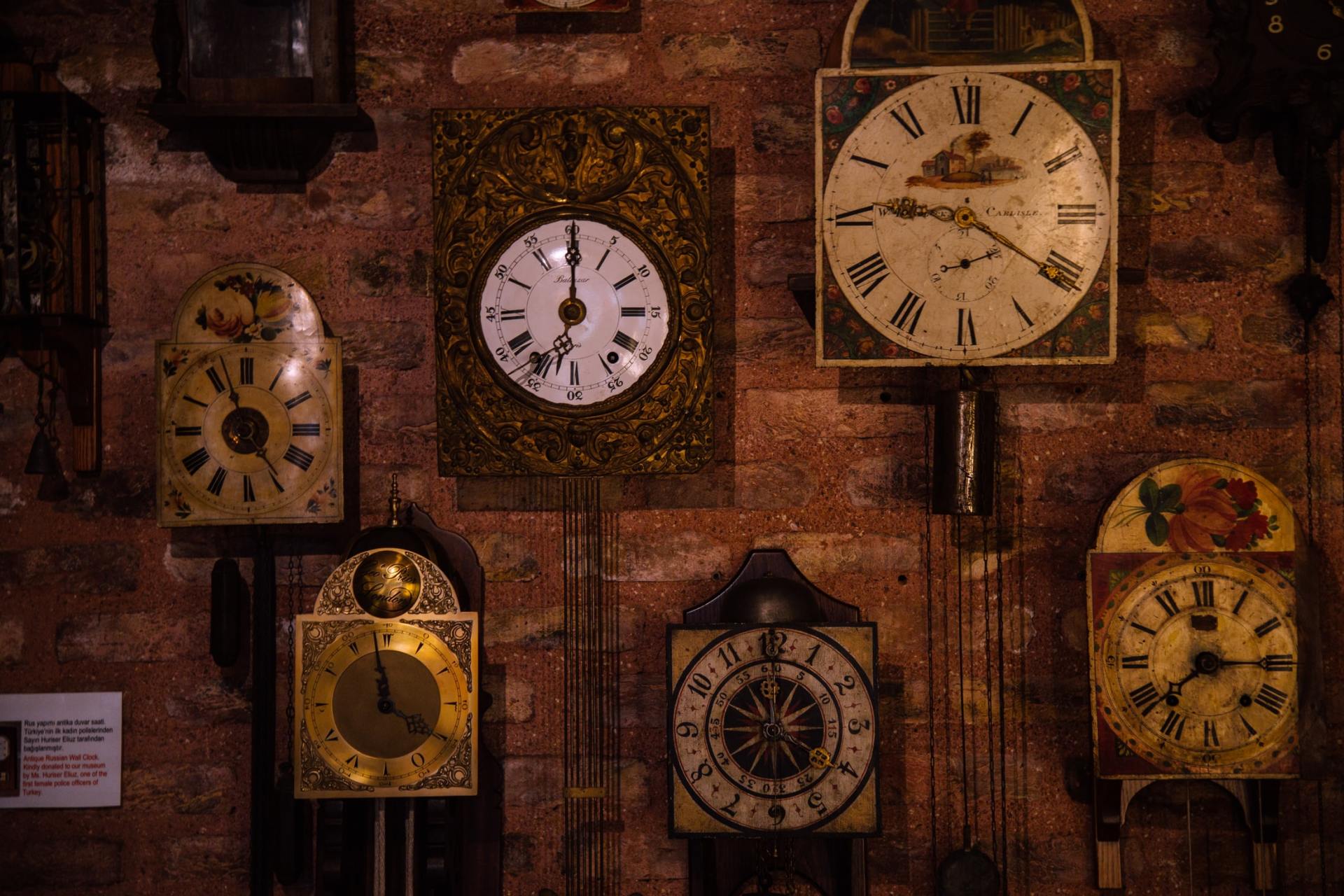History of Grandfather Clocks
- How The Grandfather Clock Got Its Name
Over 100 years ago in Piercebridge, North Yorkshire, England, there was a charming traveler's haven known as the George Hotel.
The hotel was a routine stop for horse coaches and was managed by two bachelor brothers named Jenkins.
In the lobby stood a floor clock, as they were called back in those days, that had been there for many years. One unusual characteristic on the old clock was that it kept very good time. This was uncommon, since in those days clocks were generally not noted for their accuracy.
One day, one of the brothers died and suddenly the old clock started losing time. At first it lost 15 minutes per day but when several clocksmiths gave up trying to repair the ailing timepiece, it was losing more than an hour each day.
The clocks incurable problem became as talked about as its precision had been. Some said it was no surprise that, though fully wound, the old clock stopped when the surviving brother died at the age of ninety.
The new manager of the hotel never attempted to have it repaired. He just left it standing in a sunlit corner of the lobby, its hands resting in the position they assumed the moment the last Jenkins brother died.
About 1875, an American songwriter named Henry Clay Work happened to be staying at the George Hotel during a trip to England. He was told the story of the old clock and after seeing the clock for himself, decided to compose a song about the fascinating coincidence that the clock stopped forever the moment its elder owner passed away. Henry came back to America and published the lyrics that sold over a million copies of sheet music. These are the opening words of the first stanza:
"Oh my grandfather's clock was too tall for the shelf so it stood ninety years on the floor. It was taller by half than the old man himself, though it weighed no a pennyweight more..."
Until that time, clocks such as the one in the old George Hotel were referred to by a variety of names, but not before Henry Work wrote his song, over a hundred years ago, were they referred to as grandfather clocks.
Today grandfather clocks are a great symbol of time and antiquity, acting as family heirlooms and museum quality relics.
- Some information about types of the Grandfather clocks
Most antique Grandfather clocks tend to fall into two categories, 8 day and 30 hour,although you will occasionally come across the exception that has a one month,three month,six month or even a twelve month movement. Normally,because of the extra gearing involved, a clock that goes for a month or more will wind anti-clockwise whereas an eight day clock winds clockwise.
A standard 8 day Grandfather clock has two winding holes in the dial to facilitate its two weights and is wound with a key. As you look at the clock from the front,the weight on the left hand side is responsible for making it strike and the weight on the right hand side is responsible for making it go. In addition to the brass or painted dial,antique grandfather clocks will often have other features like seconds and date dials. Slightly less common are clocks that also incorporate either a moon phases disc, or an automatum such as a rocking ship. Rarer still are clocks which boast a variety of musical bells,or even reeds to make them sound like an organ.
A 30 hour clock is not wound by a key, but rather by a rope or a chain. It only has one weight and this weight is responsible not only for the running of the clock, but also for making it strike. Sometimes a 30 hour clock will have what are known as dummy winding holes in the dial. Although they do not serve any actual purpose, they give a 30 hour clock the physical appearance of an eight day clock and make it look a little more grand, as usually,a 30 hour clock is not as expensive as its 8 day counterpart.
- The story of the Moon Phases Clocks
Today it is difficult for us to realize just how important the ever-changing phases of the moon were in times gone by. In the late 17th century, the moon dial was added to most long case clocks so people could plan ahead for when the moon was full and travel at night was not so hazardous. Clock masters endeavored to simulate and approximate the appearance of the moon in the heavens, on the face of clocks.
The arched dial was first used in clocks in the beginning of the 18th century and presented a real challenge to the makers of fine clocks. In approximately 1720, moving figures which moved back and forth with the swing of the pendulum. The moon phases discs were very small at that time, about the size of an old penny, and thus they were called penny moons .They used prancing deer, rocking ships, and Father Time with his scythe. At the time there was no practical value of this feature on the clock; it was simply a pleasing way of showing motion and life. After motion had been added in the arch above the dial, the next step was to reproduce the progress of the moon from phase to phase. A moon phases disc normally has 4 small paintings on it. Two are moon faces which are opposite to each other, and then you have two other pictures which can be a combination of things - sailing ships, country scenes, cottages etc.. A full moon occurs every 29 1/2 days, after which time, the moon which started at the top of the dial will be at the bottom and vice versa. Every 15 days, either the country scene or the sailing ship or whatever else will be at the top and obviously, its opposite will be at the bottom.
- Grandfather Clock
Grandfather Clock - also called tallcase, longcase, or floor clock. A pendulum clock enclosed in a tall narrow case. Traditional grandfather clocks have narrow cases. But, grandfather clocks can be as wide as 3 feet. See: Grandfather Clock.
- Grandmother Clock
Grandmother clock - a popular name for a shorter version of the "grandfather" or longcase clock. The name usually refers to a case standing 60' to 70' high, but they aren't limited by size. See: Grandmother Clock
Visit Us
Call Us
All Rights Reserved | Klokkelaan Clocks | Privacy Policy



